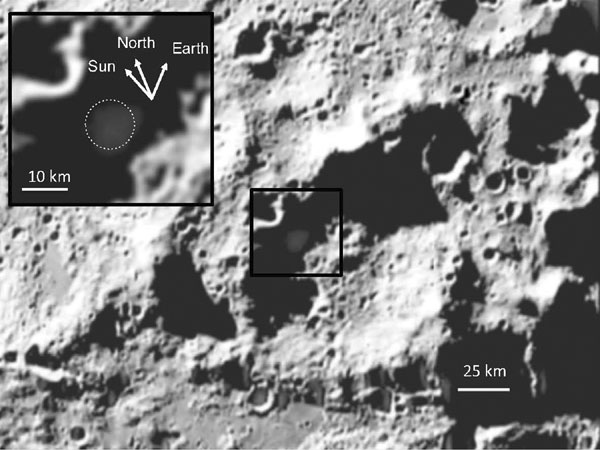Science and Health
Moon crash kicks up ice, silver, mercury: NASA
(Agencies)
Updated: 2010-10-22 09:25
 |
Large Medium Small |
WASHINGTON - A rocket sent crashing into the Moon last year kicked up several hundred pounds (kg) of water, silver, mercury and other surprising chemicals, scientists reported on Thursday.

| Debris, ejected from Cabeus crater and into the sunlight, about 20 seconds after the LCROSS (Lunar Crater Observation and Sensing Satellite) impact, is seen in an image released on Oct 21, 2010 and appearing in the Oct 22, 2010 issue of Science. The inset shows a close-up with the direction of the sun and the Earth. A rocket sent by NASA to the moon crater Cabeus last October, kicked up several hundred pounds of water, silver, mercury and other surprising chemicals, scientists reported on Thursday.[Photo/Agencies] |
The US space agency NASA sent the rocket to the permanently shadowed moon crater Cabeus last October to see what would, literally, pop up.
Several reports published in the journal Science show some surprising findings, including a large amount of water in the form of ice, carbon monoxide, ammonia and the silvery metals.
"This place looks like it's a treasure chest of elements, of compounds that have been released all over the Moon and they've been put in this bucket in the permanent shadows," planetary geologist Peter Schultz of Brown University in Rhode Island said in a statement.
During the mission, called LCROSS for Lunar Crater Observation and Sensing Satellite, the rocket was sent crashing into the dark and freezing crater and instruments on the satellite measured the spectra of light in the dust kicked up.
Anthony Colaprete of the NASA Ames Research Center in Moffett Field, California and his colleagues estimated that 5.6 percent of the total mass inside Cabeus crater is made up of frozen water.
The rocket impact created a crater about 80 to 100 feet (25 to 30 meters) wide, sending up somewhere between 9,000 and 13,000 pounds (4,000 and 6,000 kilograms) of debris, dust and vapor, the team estimated.
The silver may just be tiny particles, not in a form that could be mined, the researchers said, and the mercury was an unpleasant surprise in part because there was a lot of it.
"Its toxicity could present a challenge for human exploration," said Kurt Retherford of the Southwest Research Institute in San Antonio, Texas.